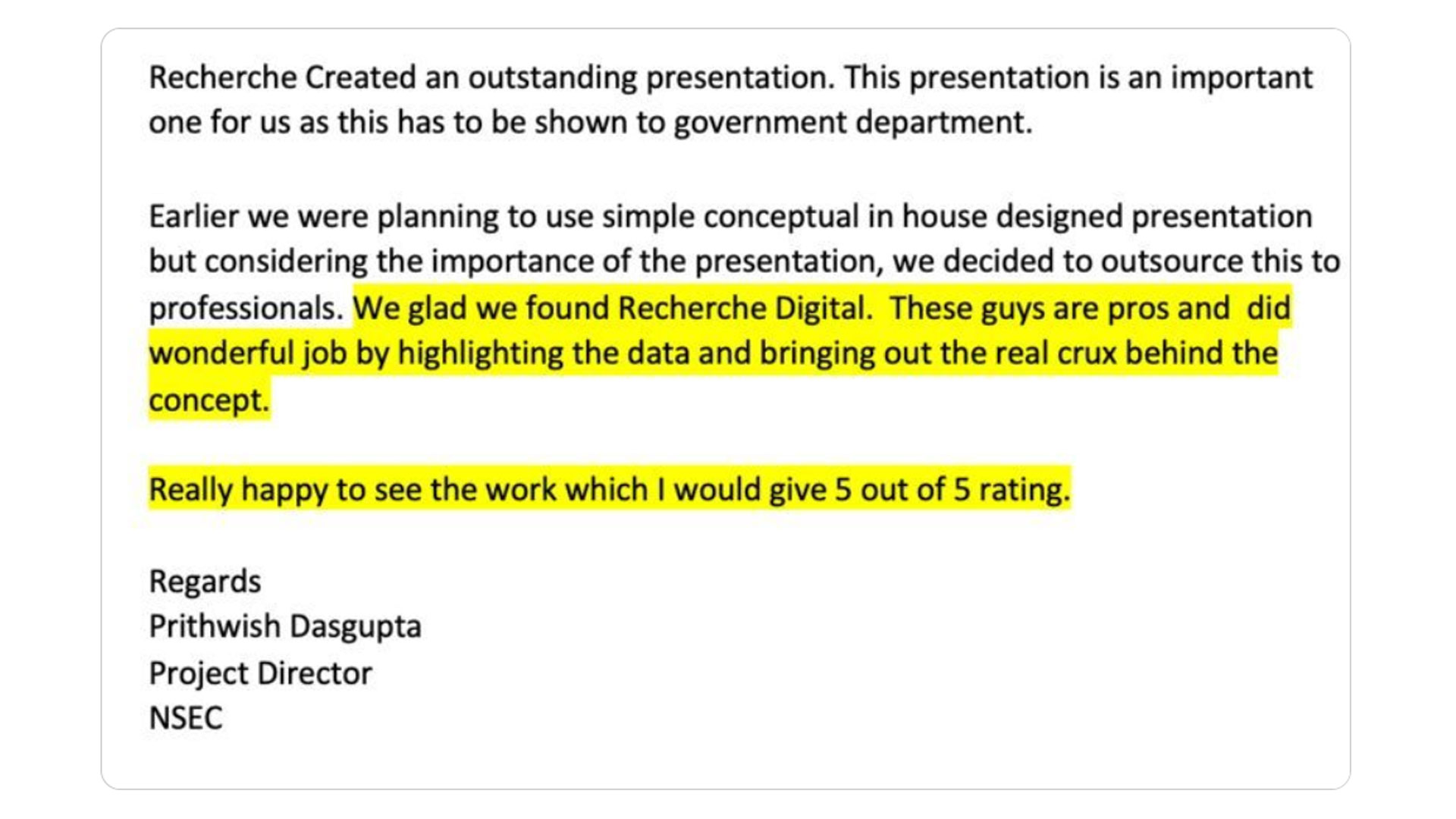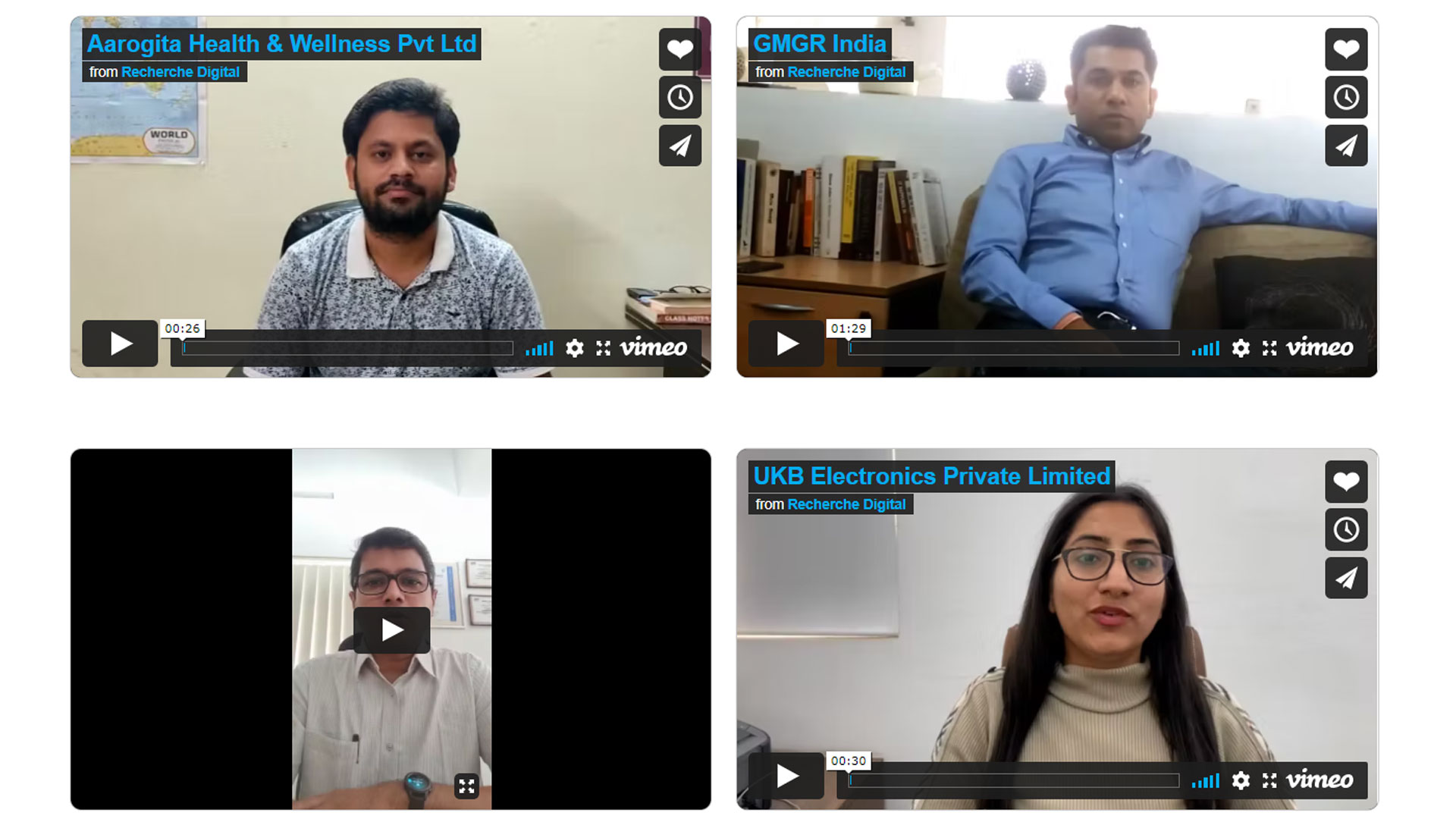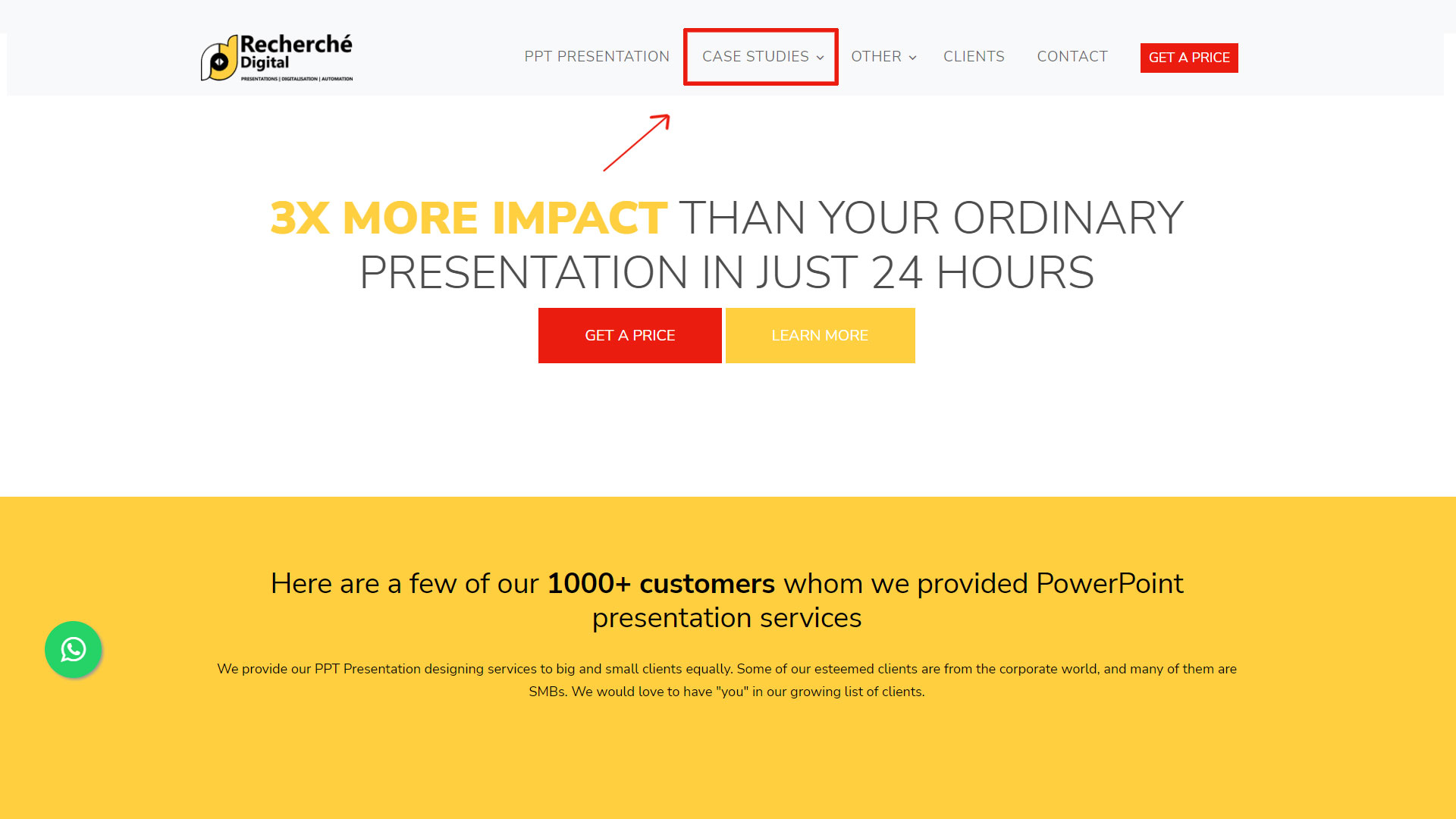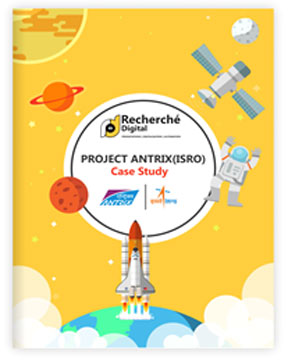How to build case studies to sky rocket your sales
Building Case Studies is one of the most impressive ways of marketing a business.
Being a relatively new marketing media in the industry ( and some might argue even if it is a marketing material ), its importance and usability as marketing material cannot be ignored.
Case studies are now gaining popularity and becoming an integral part of Digital Business Strategies for manufacturers and service providers.
You will read about the following in this article. Feel free to jump to the section directly.
Case Studies are a powerful medium through which you can pace the client and help them see their experience working with you through the well “written & presented” document in the form of a case study.
Think of a case study as a movie story ( to make it interesting ). You need a hero, villain, tough conditions, side hero, etc., including all ingredients and then narrate the story ( rather than just plain facts ).
This will entice your prospectus. He can imagine the case study like a film and position himself ( like we place ourselves, as the hero, in the movie ) in the story.
This will help super engage your audience. Now, I am not saying that you don’t include facts, figures, graphs, charts and all the other important information, but it’s like sugar-coating them in the form of a story and presenting it so that users can read it without getting bored in between and leave it in the middle.
The framework of an impactful case study
- Realistic
- Talks about challenges
- Overcoming challenges
- Shows company commitment for good product or service
- Teamwork
- Ensuring quality & timely delivery despite all odds
- Enjoying success and appreciate people involve in delivery & client’s fine judgement on selecting them
Realistic : You might like stories and fairy tales, but you don’t want them in real life ( imagine ugly creatures walking side by you… ) and especially not in business. Therefore, any case study you write must be realistic. Yes, you can add some action verbs or details, but it has to be absolutely true.
A case study is a narrative based on incidences that happened, people who worked on the project, places where it happened, challenges that you took and the final result.
Every word of it should drive it to a conclusion and be true.
B2B customers are the most knowledgeable people on both sides hence they can detect any crap out of it, and if they do, you lost the game before you even started.
Therefore, case studies have to be authentic, realistic, supported by facts and real people and crafted in a story style that is interesting to read.
Wherever possible, use real images of the buyers’ team, logo, their products under manufacturing and other information which indicates its legitimacy.
Talk about challenges: Even though you are a master of your trade, challenges are part of business and dealing with them is an integrated part of the business. Talk about the particular challenge you faced in the project, point out the problem of origin, how that problem may have impacted cost, timeline, delivery, etc.
Many organisations don’t feel comfortable sharing their challenges as that might count as a company’s weakness but think about being too perfect…a situation that is “too good to be true.” Customers are smart and intelligent; they are trained to find out the truth.
It’s always better to speak the truth, a challenge, and then take the leverage of that challenge and convert that into opportunity. Your buyers will be happy and will trust you from day one.
Overcoming from Challenge : A Hero is not one who lives in comfort but one who fights the challenge and makes the way to fortune. Once you introduce the challenge, it is time for the hero’s entry, i.e., your company/brand.
Overcoming a challenge must be written in a way that shows the true colours of your company. This is where you reflect on your beliefs, values, tenancy and consistency. An attitude of “never give up.” Your buyers want to see a superhero in you who can fight, do the right and make things possible. Your buyers will see you as a reliable and capable supplier when you showcase how you overcame those challenges.
There is a difference between saying we are reliable partners and showcasing them ( literally ) that you are a reliable partner
Case studies, if written correctly, can do magic and win the client the way your competitors can’t even think of.
You might have powerful competitors, but you will stand out in front of them because of your character, not because of machinery or men’s power.
Show commitment to good products & service : Your belief in your quality must be the focal point of everything you do. In the B2B world, especially in the manufacturing industry, the importance of quality is paramount.
While writing a case study, see where and how you can emphasise your commitment towards quality.
This might be finding an ‘’mm” difference in product dimension or access of any chemical beyond the tolerable limit and scrapping off an entire lot because you have a strong belief in quality and are willing to take a monetary hit or spend additional manpower on maintaining high quality.
Teamwork: A strong team is the strength of any company, like its machinery or facility. Talk about real people, their names, designation and their individual contributions to the project. This will support you two ways a. it’ll help you showcase that it is realistic, and b. you have a strong team.
Most of the content in marketing materials talks about leaders and managers, but when you talk about teammates who are actually working down there on the machines and give them true credit, your image as a company come out with flying colours. This is another way of standing out from the crowd and differentiating your company from its competitors.
Celebrating success : It is important to show the celebration in your case studies. These are usually happy endings that leave the prospective in a positive state. Ending case studies on a happy note also help to highlight the human angle and various emotional states.
Celebrating a project or order should be taken as an achievement and also communicate the prospective that the project is considered as an opportunity and completion of the same is celebrated.
A photo with a happy client or a screenshot of an email, or a video testimony will bear a big impact on a prospective client.



How many case studies are sufficient?
As many as you can.
We at Recherche Digital have more than 100+ case studies so far, and we aim to build four Case Studies per month.
Building case studies help boost the trust of the buyer before even he speaks to anyone in the company.
In my other write up Digital Marketing Strategy for manufacturers, I specifically talked about how trust is one of the major reasons that most prospective buyer stories ended on the website without dropping the enquiry or initiating dialogue with the company.
Case studies help prospective buyers to initiate dialogue and start a conversation with a level of trust already built by their due diligence ( and not hearing from you as a beneficiary ).
It is not that the website visitors are going to read all the case studies but having 10, 20 or 100 case studies will give them confidence that you are trustable partners to many. Case studies are one of the two most important parameters that your client is going to judge your company, the second parameter is testimonials.
Testimonials are altogether a different topic to discuss, and you can read about it here.
Use of case study in Website
I have seen many websites where they have case studies or whitepapers, but they are buried in the third or fourth level of click. People are not going to find out the gold. Keep your case studies as one of the major links on the website and hardly a click away from the Home page.

Use of a case study in Digital Marketing Strategy
Another usage of a case study is in digital marketing strategy.
Marketers have noticed the benefits of having the trust winning material in the form of case studies, and they use this as a primary material.
In fact, one of the first things that are recommended for getting started with digital marketing is building case studies. If you want to download a generic marketing strategy for manufacturing business, you can download it from here.
Samples of case studies
At Recherche we have to build many case studies for manufacturing companies and service-based companies. While most case studies are bound with NDA and cannot be shared on public media, others are given here for your reference.

The month was February, year 2020, when India was not yet restricted under the norms of Corona lockdown. In order to maintain our promise to the deadlines which we already had, we were hitting our fingers on the keyboards in our office, and just then, Team NOKIA made a Wild Card Entry….

It was a regular day at work when Antrix Corporation Limited, the commercial arm of the Indian Space Research Organisation (ISRO) made an important announcement. Antrix required a presentation which ISRO could present….

Abbott, highly trusted healthcare company turned to Bharat Infotech. Abbott required a presentation at the earliest possible. It had an international conference, where it had to present an imposing presentation. The overseas conference was very important for Abbott and just a couple of days….
1.Case Study in PDF
2.Case Study in E-Magazine format
3.Case Study in PPT
4.Case Study in Webpage format
While a case study in PDF format can be used to send it through email, a case study in E magazine gives a sophisticated look on your website and informs the user how valuable your case studies are for your business and thus inspiring the visitor to check out those studies like a magazine.

A case study in PPT format is used when you are presenting to your client in a one-to-one m
Finally, a case study in webpage format is found useful in building your SEO score and using it as content to gain in SERP.
Author : Harish K. Saini
Publishing Date : 16 March 2022

 +91-9540344454
+91-9540344454 